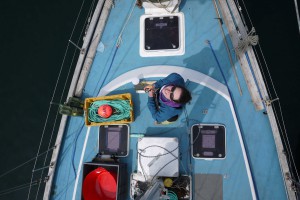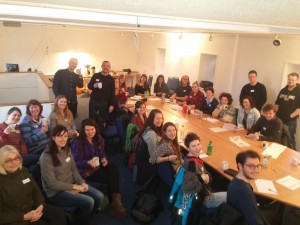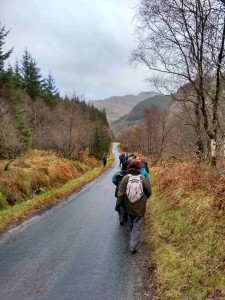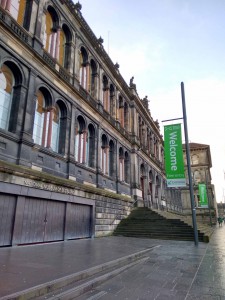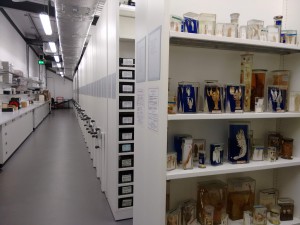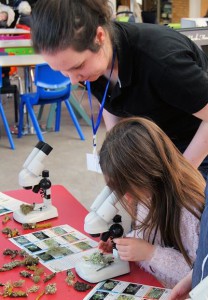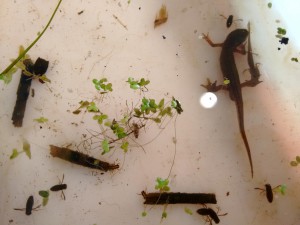
Hello! My name is Katherine and I have just started working as a TCV Natural Talent Trainee based at National Museums Scotland in Edinburgh. My traineeship is all about saline lagoons: a fascinating and relatively understudied habitat that is found around our coastlines. Over the next twelve months, I will be involved in increasing our knowledge of these habitats as well as improving awareness and conservation efforts for saline lagoons.
First of all: What are Saline Lagoons?
Saline lagoons are coastal lochs which are only partially separated from the sea. Seawater enters these lagoons by trickling through banks of shingle, flowing through narrow channels which connect the lagoon to the sea or spilling over into the lagoon during high tide. This means that the water within these lagoons is neither fully freshwater nor fully saline, but brackish. The salinity (saltiness) of these habitats is highly variable both between lagoons and within individual lagoons over time. This means that the species that thrive within these habitats include marine species that are tolerant of low salinity, freshwater species that are tolerant of high salinity, and highly adapted lagoon specialists that are rarely found elsewhere. The biological communities that form within each lagoon are therefore interesting as they are unique to the conditions found in that particular time and place.
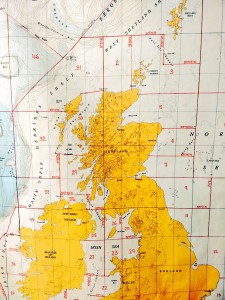
Saline lagoons are found all around the UK coastline, but are particularly common on the Scottish islands of the west and north coast.
TCV Training Week
The first week of my new position began at the TCV offices in Edinburgh, with an induction week for all of the new Natural Talent and Natural Networks Trainees. The week was jam-packed with essential training including risk assessments, project planning and citizen science. It was great to meet my fellow trainees and hear about the different projects we will each be working on. Over the next twelve months, together we will be contributing to protecting less well known species, increasing biodiversity and improving access to green spaces. Even with all of us heading off to different placements across the UK, it now feels like we are working as a team and I can’t wait to hear what the other trainees get up to!
Starting at the Museum
After a whirlwind induction week, I had my first day at National Museums Scotland. After spending so much time at this museum whilst growing up, it has been wonderful (and a bit weird) to see what life is like behind-the-scenes. My first week was mostly spent meeting all the lovely staff here at the museum as well as my new best friend: my microscope! Working at the National Museums Collection Centre, I will be using some of the 10 million objects and specimens in the Natural Sciences collections to learn how to identify saline lagoon invertebrates, plants and closely related marine species.
Marine isopods (the aquatic form of woodlice) were the first group of invertebrates I would be looking at. Over the past few weeks I have been using museum specimens and identification guides to practise spotting the key features used to tell these species apart, as well as getting to grips with some of the complex terminology used in isopod anatomy. While doing this, I have also had the pleasure of “meeting” my first lagoon specialist (species which are only found in lagoons): Idotea chelipes.
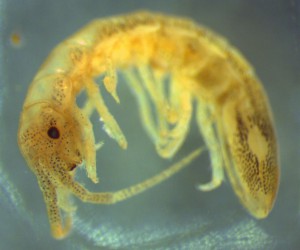
Idotea chelipes: an isopod which is only found in lagoons. This specimen was collection from a saline lagoon on South Uist, Scotland.
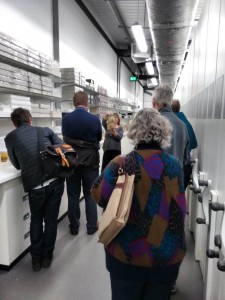
“What’s in that jar?!” — The Forth Estuary Forum tour around the National Museums Collection Centre.
Forth Estuary Forum Visit
Working at the museum presented the first opportunity for me to engage in lagoon outreach. On February 10th, sixteen visitors from the Forth Estuary Forum came on a visit to the National Museums Collection Centre. As part of their tour around the collections, I gave a presentation on saline lagoons to illustrate the museums’ research in this area and our planned future work in the Firth of Forth. Many of the visitors spoke to me about their interest in this project and even suggested other potential lagoon sites in the area which I am looking forward to investigating!
TCV Edinburgh Volunteer Group
In addition to my work at the museum, I have also been working directly with TCV this month. February, despite the cold winter weather, brought me my first day on a TCV practical conservation task with my local volunteer group! A really fun and satisfying day was had by all as we cut back prickly brambles and bushes to improve the paths and woodlands around Craigmillar Castle Park.
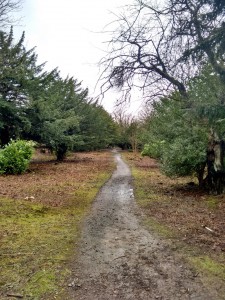
The result of a hard day’s work! We hope that the woodlands around Craigmillar Castle will now be more open, welcoming and biodiverse.
Strathearn Festival of Science
The month ended with my first community engagement event. Working with Joanne Dempster from OPAL and my fellow Natural Talent trainee Rebecca Cairns, on the 27th of February I spent the day in Crieff at the Strathearn Festival of Science. We all had great fun showing families our lichen lab and collection of pond beasties. Seeing the fascination in children’s (and adult’s!) faces when they interact with these natural wonders for the first time is fantastic, and I can only hope that some of the three hundred people we engaged with will be inspired to go outdoors and explore their local wildlife.
It is hard to believe that my first month is over, but I have already learnt so much and have many exciting plans for the next year! Check back soon to hear more about my adventures with saline lagoons …
Katherine Whyte
Follow my traineeship on Twitter for daily updates!
Find out more about Natural Talent, National Museums Scotland and the Esmée Fairbairn Foundation.

